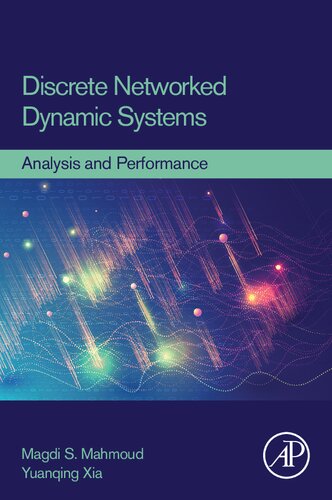

Most ebook files are in PDF format, so you can easily read them using various software such as Foxit Reader or directly on the Google Chrome browser.
Some ebook files are released by publishers in other formats such as .awz, .mobi, .epub, .fb2, etc. You may need to install specific software to read these formats on mobile/PC, such as Calibre.
Please read the tutorial at this link: https://ebookbell.com/faq
We offer FREE conversion to the popular formats you request; however, this may take some time. Therefore, right after payment, please email us, and we will try to provide the service as quickly as possible.
For some exceptional file formats or broken links (if any), please refrain from opening any disputes. Instead, email us first, and we will try to assist within a maximum of 6 hours.
EbookBell Team

5.0
38 reviewsDiscrete Networked Dynamic Systems: Analysis and Performance provides a high-level treatment of a general class of linear discrete-time dynamic systems interconnected over an information network, exchanging relative state measurements or output measurements. It presents a systematic analysis of the material and provides an account to the math development in a unified way.
The topics in this book are structured along four dimensions: Agent, Environment, Interaction, and Organization, while keeping global (system-centered) and local (agent-centered) viewpoints.
The focus is on the wide-sense consensus problem in discrete networked dynamic systems. The authors rely heavily on algebraic graph theory and topology to derive their results. It is known that graphs play an important role in the analysis of interactions between multiagent/distributed systems. Graph-theoretic analysis provides insight into how topological interactions play a role in achieving coordination among agents. Numerous types of graphs exist in the literature, depending on the edge set of G. A simple graph has no self-loop or edges. Complete graphs are simple graphs with an edge connecting any pair of vertices. The vertex set in a bipartite graph can be partitioned into disjoint non-empty vertex sets, whereby there is an edge connecting every vertex in one set to every vertex in the other set. Random graphs have fixed vertex sets, but the edge set exhibits stochastic behavior modeled by probability functions. Much of the studies in coordination control are based on deterministic/fixed graphs, switching graphs, and random graphs.